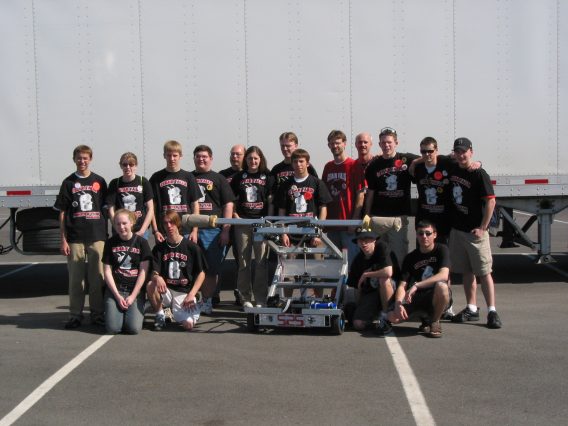

The game was Stack Attack. This was the first year the game included an autonomous mode. We spent much of the build season developing the robot’s drive train. Then we ended up waiting a while for the frame to be welded. The result was there was minimal time left for software. We got the robot running and had not worked on the autonomous code very much when we ran out of time and had to put the robot in the shipping crate. Mr. Swartley went back to the school for something (this was before we had ubiquitous email access) and found out the robot ship date had been postponed by two days due to an east coast snowstorm. We took it out of the crate and spent the next two evenings developing software for the new autonomous mode. Our autonomous mode enabled us to drive up the ramp in seconds to knock the vast majority of the crates to our side of the field. The team competed at both the St. Louis Regional and the Championship event held in Houston. At the St. Louis Regional, we were partnering with 16 & 356 and lost in the semi-final round. The championship in Houston also went well. We were the #8 seed in the Newton Division. Students on the team felt strongly that the team name should be the Swartdogs, in a tribute to the founder of the team and Cedar Falls High School physics teacher, Mr. Swartley. Mr. Swartley discouraged the team name, but the students had it announced before matches anyway! We had to once again change our build site, this year working in the back of a Cedar Falls Utilities building.
Stack Attack is the 2003 FRC game. The two alliances of 2 robots competed to win by moving large Sterilite bins into their zone and arranging them into stacks. The more bins and the higher the stack, the more points you scored.
The autonomous mode started with the robots attempting to knock down the opposing alliance stack.
During the human controlled portion, robots would attempt to keep the most number of bins on their side, and prevent the opposing teams from getting bins onto their scoring area and knocking down opposing stacks. Robots that were capable of stacking were important as they were needed to rebuild stacks when they were knocked down.
